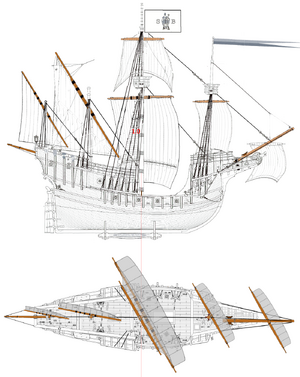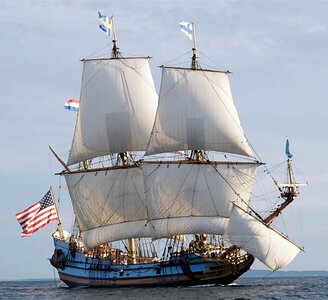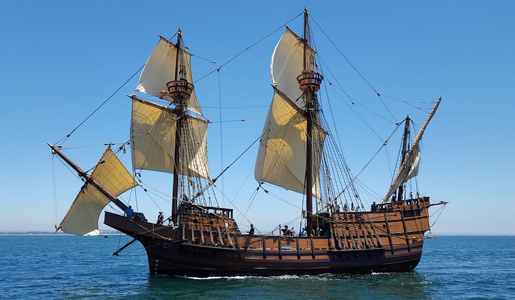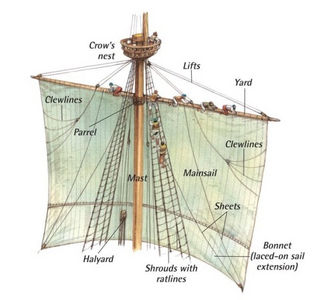I intend to model my Ragusian Carrack under full sail, with the wind from the aft, but at an angle (say the 4 or 5 O'Clock position). I know what position the square-rigged sails should be in, and know what I've seen on models for the lateen sail on the mizzenmast, but wonder about the lateen sail's correct position. It's purpose, I believe, is more to steer the ship, than to provide propulsion. My model will also have a Bonaventure sail, which further complicates the positions of the rear-most two sails.
For rigging purposes, I have made a side and top view of the intended sail positions, which I will post here:

Do you think the mizzen and bonaventure sail positions are logical and correct? It seems to me that they would tend to turn the ship toward starboard, that is the reason for my question.
Well sailors, what say ye?
For rigging purposes, I have made a side and top view of the intended sail positions, which I will post here:

Do you think the mizzen and bonaventure sail positions are logical and correct? It seems to me that they would tend to turn the ship toward starboard, that is the reason for my question.
Well sailors, what say ye?









